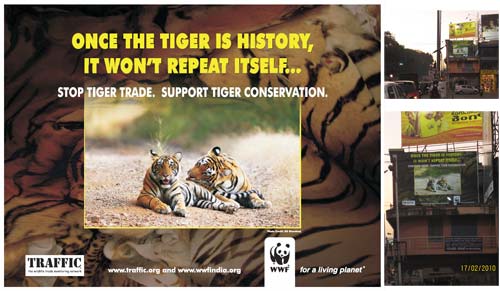What do the world of crop protection and the world of nature conservation have in common? The dangers of illegal trade in unacceptable goods. For the pesticide industry the problem is counterfeit and illegal substances, for the conservation community it is the trafficking of protected species.
I was quite surprised to learn during the recent annual assembly of the European Crop Protection Association (ECPA) that one of their big problems is that 7 to 10% of the plant protection products traded on the European market at not “the real thing”. They are either counterfeit products, which are basically imitations of registered chemicals and there are illegal materials which are not registered at all. In both cases the products are untested, unauthorised and introduced by criminal networks. ECPA estimates that the total market of counterfeit and illegal plant protection products amounts to €1billion per annum in Europe alone, and more than €4.4billion globally.
This made me think of the challenges that nature conservation organisations have in relation to trade in animal products, such as tiger bones, bear gall bladders, turtle shells and sharks fins. According to TRAFFIC-the wildlife trade monitoring network, the value of illegal wildlife trade, excluding timber and fisheries, is estimated at USD 8 to 10 billion per annum.
We have the advantage that there is a global Convention against illegal trade in endangered species of wild fauna and flora (CITES), but the problems of registration, documentation and recognition by untrained officials are the same in both cases. Quite possibly, the criminal gangs are the same as well, or at least they are most likely inter-connected
The next, sixteenth CITES Conference of Parties is taking place in Bangkok from 3 to 14 March next year, but recently the US Secretary of State, Hilary Clinton made a call for action about wildlife trade, and the USA has designated 4 December as Wildlife conservation Day. (http://www.state.gov/r/pa/prs/ps/2012/11/200355.htm).
Maybe this increased interest in dealing with wildlife trafficking and illegal trade in plant control products is an unexpected opportunity for two groups of society that often have a very different agenda to work together. Training of customs officers, border guards and police could be done in partnership, liaison with Interpol and other international legal authorities could be streamlined, awareness campaigns could be harmonised.
I have facilitated contact between TRAFFIC and ECPA, and let’s see what we can do together.


http://www.intracen.org/The-Trade-in-South-East-Asian-Python-Skin/
is a report that came out today.